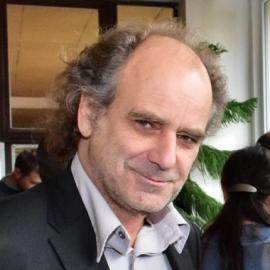Exploring the structure function relationship of membrane-pore-forming FGF2 oligomers - a single molecule approach
Grant Agency
Grant Agency of the Czech Republic
Topics
Biospectroscopy.
Year from
2014
Year to
2016
Abstract:
Fibroblast Growth Factor 2 (FGF2) has numerous biological activities, which are exerted when FGF2 is secreted into the extracellular space. It however lacks a signal peptide that would translocate it to the endoplasmatic reticulum and enable using of the classical secretory pathway. It directly binds to the inner plasma membrane leaflet in the PI(4,5)P2 dependent manner, and by forming a membrane pore it spans over the entire bilayer, and eventually forms a ternary complex with heparan sulfate proteoglycans and high affinity FGF receptor outside the cell (unconventional secretion). Only little is known about the structure of the FGF2 oligomers and the lipidic membrane pores, that intermediate FGF2 membrane translocation. Therefore we propose advanced fluorescence microscopy techniques to study this phenomenon, which allow for answering fundamental questions regarding structure and dynamics of the membrane inserted proteins. The ultimate goal is to fully characterize FGF2 based membrane structures in terms of aggregation number, size, diffusion properties, nano-platform occupancy etc.
Fibroblast Growth Factor 2 (FGF2) has numerous biological activities, which are exerted when FGF2 is secreted into the extracellular space. It however lacks a signal peptide that would translocate it to the endoplasmatic reticulum and enable using of the classical secretory pathway. It directly binds to the inner plasma membrane leaflet in the PI(4,5)P2 dependent manner, and by forming a membrane pore it spans over the entire bilayer, and eventually forms a ternary complex with heparan sulfate proteoglycans and high affinity FGF receptor outside the cell (unconventional secretion). Only little is known about the structure of the FGF2 oligomers and the lipidic membrane pores, that intermediate FGF2 membrane translocation. Therefore we propose advanced fluorescence microscopy techniques to study this phenomenon, which allow for answering fundamental questions regarding structure and dynamics of the membrane inserted proteins. The ultimate goal is to fully characterize FGF2 based membrane structures in terms of aggregation number, size, diffusion properties, nano-platform occupancy etc.
prof. Hof Martin Dr. rer. nat., DSc.
E-mail
martin.hof jh-inst.cas.cz
jh-inst.cas.cz
 jh-inst.cas.cz
jh-inst.cas.czRoom
221, 107 c
Department
Extension
+420 26605 3264, 2011
Publications





